
There are many words that may describe Clara Balaguer’s practice. She is variously named a “tutor,” a “cultural worker,” or a “vernacular designer” at the Piet Zwart Institute, that houses the postgraduate program of the Willem de Kooning Academy based in Rotterdam. While in her own Instagram bio she describes herself as a “Steward” of “To Be Determined,” a “Publisher” of Hardworking Goodlooking, and a “Director” of The Office of Culture and Design (RIP).
In October 2020, we talked to her about her manifold practice. It was a conversation that led us to some dizzyingly complex topics, turns and terms. We first attempted to conduct this interview through Jitsi, a free encrypted open-source video conferencing platform. However, after fifteen minutes of the connection repeatedly cutting out, we resorted to using Clara’s university Zoom account. The routine of succumbing to the master’s tools is something we address in detail later on in our talk. It is worth noting that in our conversation, Clara occasionally uses graphic design as a verb rather than a noun—an act that sums up her defiantly unorthodox approach to the subject.
Rhys Atkinson: Could you explain the different identities you have/had with your practice?
Clara Balaguer: It started with The Office of Culture and Design (the OCD). The name is pretentious for a reason, I wanted it to sound like a government office. There is no ministry of culture in the Philippines, and barely any funding, let alone rural or peri-urban contemporary cultural programming. So if the message was that the private sector has to step in, I thought I would just make my own “ministry” or develop autonomous (ad)ministration. The name did get me into a few meetings because people thought I was with the government.
The names usually start off as deadpan jokes, but there is generally a deeper concept that emerges or is intended behind them. I could no longer stomach being “part” of the government when Rodrigo Duterte was elected as president, even if it was in a mock way. The OCD had outlived its name and purpose, it needed to become overtly political. And so the OCD literally died. For a year, I told people it was in the process of assisted suicide. Some art students in Switzerland found this very distasteful, the idea of talking about death openly. They asked, “Why do you need to talk about it? Why don’t you just die quietly?” In Non-Swiss cultures, there is often the idea of a conscious death, and that death is a transition or a portal into something else that requires preparation while it is still alive but in the process of expiring. You have to prepare your loved ones for that, so there has been a death in between names.
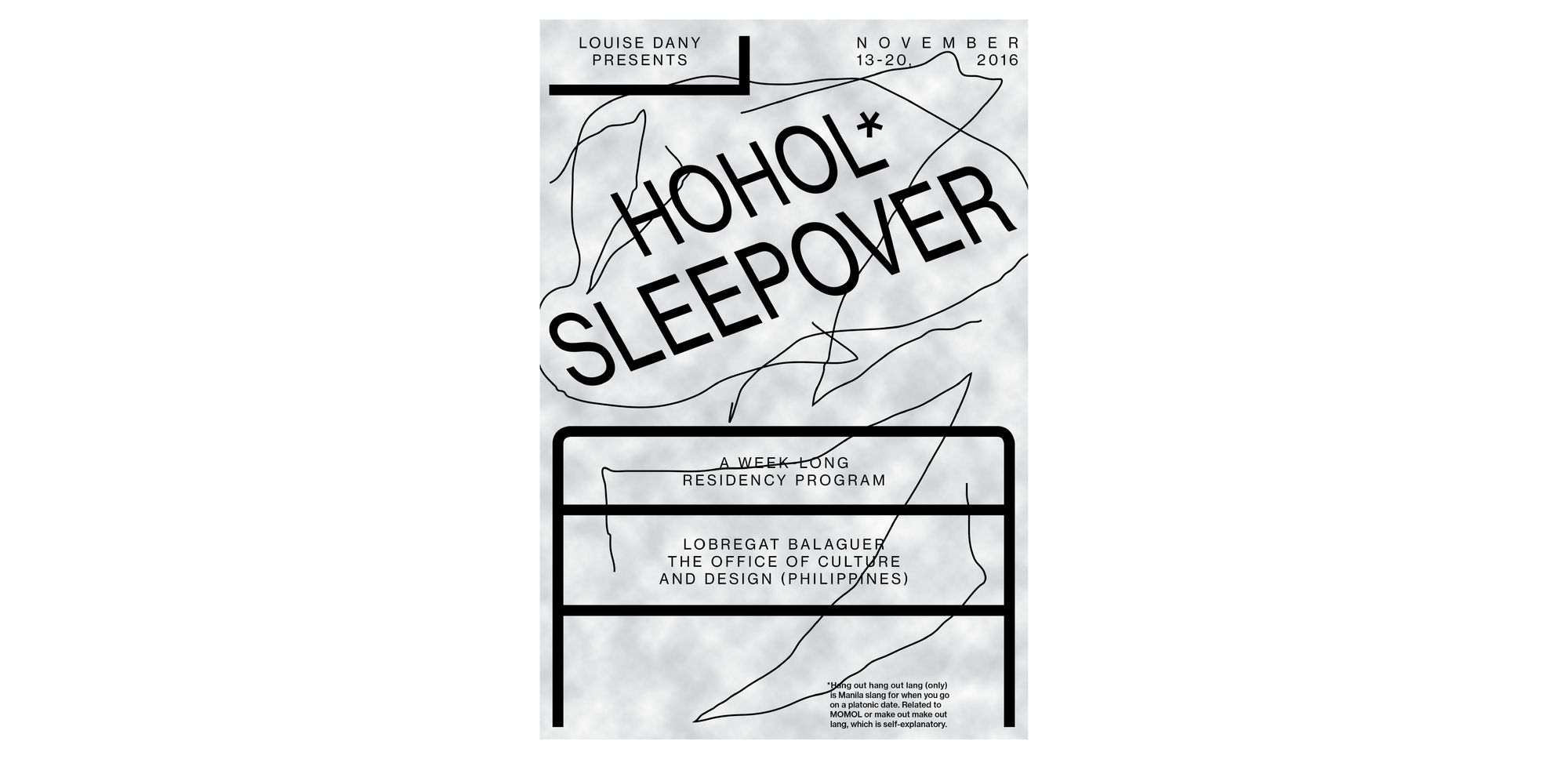
And the name that came after was Hardworking Goodlooking. In that project, you work very closely with the printers in Manila, how has your relationship with them affected your design process?
The relationships that we formed are quite personal, built upon the notion of confidence in their skills. The form of our publications adapt to the process and the skills that we know the printers have. The research that was being carried out and the printers and paper suppliers are integral to the publishing hauz. We never invested in a Riso machine ourselves, not because there is no demand in the local design community but because there already is a local cottage industry. We wanted to support this existing industry, not take away their market or modify their skillset or compete with them under the assumption that we could do things better.
So the location is significant to the practice of Hardworking Goodlooking?
I think it is impossible to do Hardworking Goodlooking outside of the Philippines. I moved two and a half years ago to the Netherlands. We’re four now, Kristian, Dante, Czar, and me—Czar being the one who still remains in Manila. While we are still doing things together, the last few years have been this sort of collective meditation or rumination. Without the relationships it had on the ground, does Hardworking Goodlooking need to die? The four of us have been exploring our relationships, how we work together. Because I cannot be close to the landscape that lends us our process, and because it was dependent on a certain manic energy that I’d bring to the research and administration, can the practice survive without the mania? However, Kristian has recently decided to move back to the Philippines. With Kristian and Czar together, perhaps it can be kept alive, we aren’t sure. The project is on life support for the moment, as this new order settles.
Your Publishing as Bloodletting text was laid out with nontraditional design software, You seem to have a very open approach to what graphic design can be?
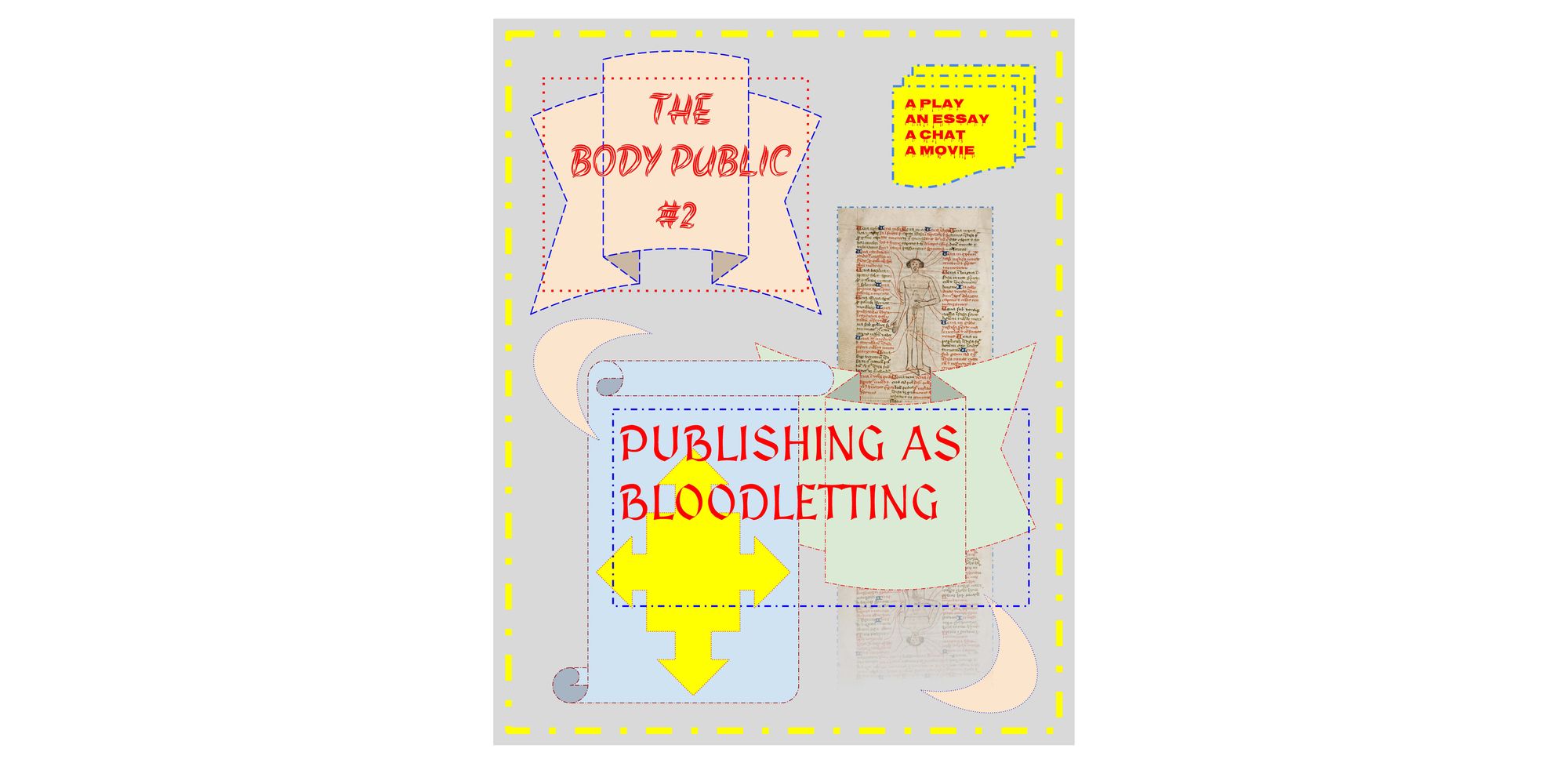
When you use software that isn’t meant for graphic design or that perhaps is intended for a truncated form of graphic design, these limitations force you into another direction. They make you speak a different language, one that is creolised.
Templates or tools of popular access tend to be shunned in our current consumptive thirst for difference. It’s more specifically a quest for novelty in the art world that in design manifests as the need for a differential—similar but slightly different concepts. To engage in the recovery of what is at the fingertips of everybody to the point of being banal (what Heidegger calls “ready-to-hand”) is a critical space of experimentation. There was this brief kind of flirtation with clipart in the graphic design world in the early 2000s. However, it was a blip on the radar, more concerned with extracting aesthetics from these programs and templates and later subsuming them into traditional design software. I see templatery as an avenue for refusing high-cost, exclusionary tools, such as Photoshop or InDesign. They are an opportunity to unlearn, to find a new structure outside of streams of privilege in practicing design. I learned to graphic design on [Microsoft] Word, mostly through rudimentary exercises in text hierarchy, formatting ideas in writing through formatting text. It’s a comfort zone, a romantic place. To understand how far you could go with that kind of popular working tool is to deeply listen to the literacy of the body popular. If you can understand where they’re coming from, maybe you can learn to speak a similar language, opening a space of negotiation.
Has developing your graphic design practice changed the way that you write?
I sometimes write with a graphic recourse in mind, writing directly onto InDesign, using it as a word processor. Nothing super groundbreaking, but a valuable exercise nonetheless. It is important, not just for the designer, for text to live on the page in a dignified way. The writer cares about this as well. To compose text directly on a graphic layout helps in understanding that different turns of phrase have correspondingly different visual side effects. Sometimes, it’s more stimulating to write on top of something that has already been laid out, as you don’t have the pressure of a white page. It’s like, “Oh, this isn’t emptiness, this is a system that begs to be in conversation.”
Would you describe Hardworking Goodlooking as a critical design practice, although I personally struggle with this buzzword “critical.”
What’s your definition of the word, why does “critical” not sit well with you?
For me, there is a separation in the design industry between commercialised practices and then kind of smaller self-serving academic practices. I don’t think you can be critical and run a client-driven design studio, because most client work is just a servant to capitalism, which I think we all agree is bad. This creates this tension between what actually happens in the design industry and what many wishes could happen.
I can’t speak for the rest of Hardworking Goodlooking, but I do try and resist this tendency to discard words before the word’s project has been performed. Linguistic performativity (changing reality by modifying our verbal descriptions of reality) takes a time that requires patience—a virtue the tendentious cultural world often lacks. Decolonisation, for example, is a word that is falling victim to this consumptiveness. We like to run through words, exhaust them before their time. Though we’re not done with the project of decolonisation—it is an activity as opposed to a single act—I use the word a lot less. Not because I personally have a distaste for it but because I know others do. One has to project a veneer of contemporaneity, or at least to understand what is contemporaneous, in order to be taken seriously, to survive, to be funded or made liquid in currency. I feel like the same thing is happening now with the word “critical.” We are far from done with the project of criticality. In fact, in the face of rising extremism and fact-aversion, criticality is in a state of emergency.
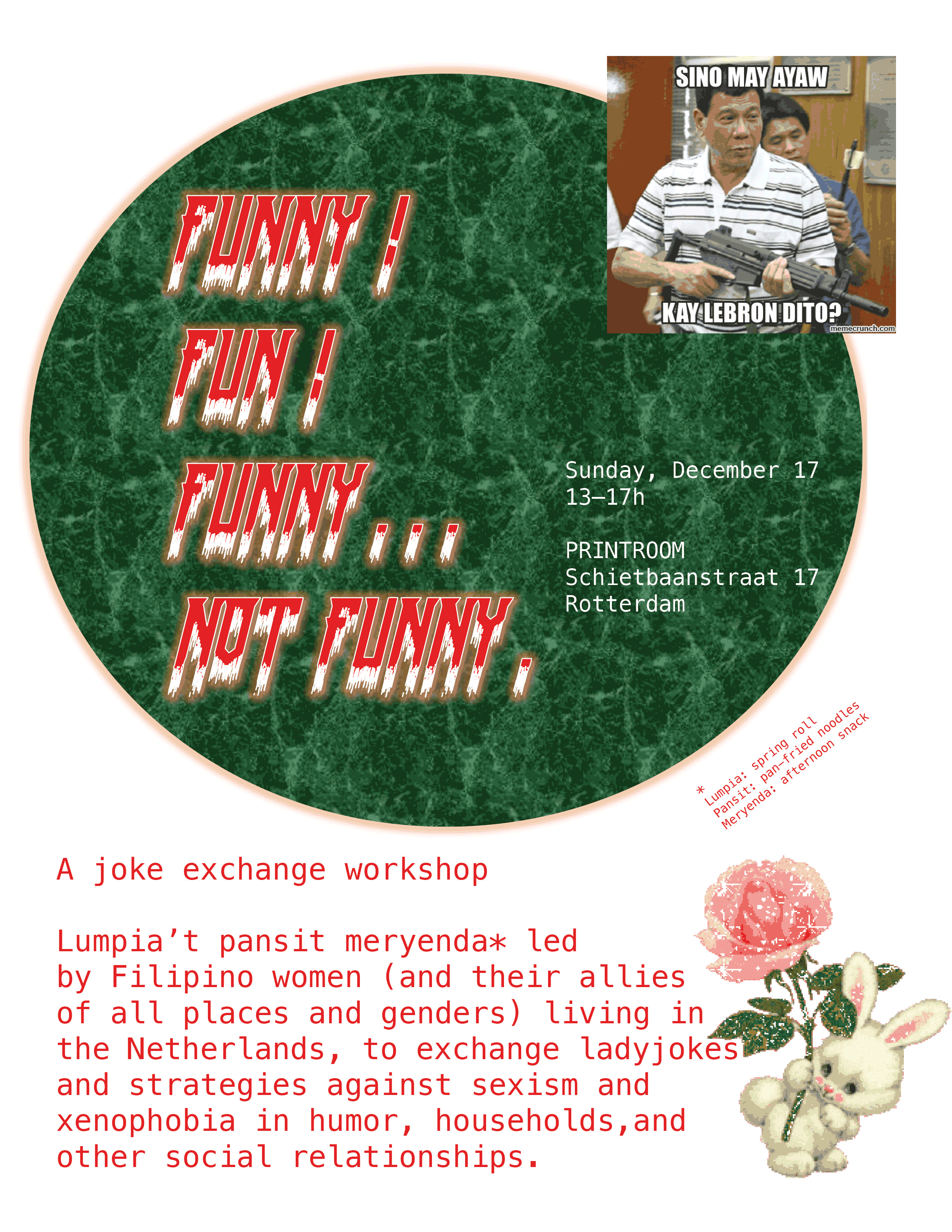
So you have a critical edge, but there is also a real sense of humour and self-deprecation in your work?
So in terms of whether our practice is critical: humour and self-deprecation is a non-aggressive approach to criticality. What we bring to the table points to the place we come from. In the Philippines I never quite fit in. I was too direct to be considered a well-behaved Filipino woman. But I did, under this pressure to submit, learn to temper my critique and be lateral. I don’t always use this tactic, but I can draw from it. And I do not see it as submission. It’s exerting negative power. By ceding with gentleness rather than occupying with aggression—with a joke or an apology or a compliment—one can command a space. It is not necessarily a disempowering experience.
“Doubt is a fickle, ungovernable sensation, I cannot claim to have mastered it.”
My understanding of criticality is also based on the notion of doubt, a rumination of what we’re not quite sure of, what we’re still working out. Also, working things out together, labouring through certainty and doubt. As I practised, I learned to be less confident about what I was saying and to inhabit this as a positive thing—when possible. Doubt is a fickle, ungovernable sensation, I cannot claim to have mastered it. I have been trying to eliminate absolutes from my vocabulary: “always,” “never,” “nothing,” or “nobody.” For me, the project of criticality will never be over, just as the project of decolonisation will never be over. Although “never” is a strong word, and I just said I was trying to eliminate absolutes. Case in point, it’s uneasy—as in “hard” and also as in “unsettling”—to think in terms of uncertainty.
It’s not always words that are the problem. The meanings with which we infuse them are often way more restrictive. A composition of meanings is much more interesting to look at than a monolithic definition.
To move to a slightly different topic, in your Dye Trying book, you published a William Morris essay without permission. What role does piracy have in your practice?
I’m trying to understand what ethical piracy could mean. I think it’s a matter of scale and affinity. Who is copying, at what scale, and for what purpose? Spoken bluntly: if you’re an asshole, I don’t want you to pirate my book. What does asshole mean, though? There are many ways we could define the term asshole from a legal sense. I like writing extra-legal things, which is essentially the same as writing legal things: you have to build in holes, graynesses, possibilities for loose interpretation.
I’d like to push copyright statements in the same way that environmental lawyers have kind of fleshified nature by turning her into a legal person. How do we add a human element, a recognition of individuals and their subjective natures, into a copyright statement that traditional law practice has told us to consider as an objective exercise? How to set a precedent for legality, to stretch legislation by arguing a strong case? In 2007 it was not legal to file court cases on behalf of cetaceans—dolphins, whales, and porpoises—as legal persons. Here, thinking of a case filed (and won) by Filipino lawyer, Atty. Cabrido, to stop Japanese oil exploration in the Tañon Strait. In 2015 they won the case. This case was initiated before the legal wins in Ecuador and New Zealand that used the same trick to grant rivers legal personhood. I’m not sure if Cabrido and his team were the first (certainly they were not the most widely reported) lawyers to do so. But they, and others, are setting precedents for post-human interpretations of human law. These wormholes allow for illegality to be sanctioned as law.
Circling back to William Morris in this roundabout answer to your question: I decided to pirate the essay for two separate, seemingly opposed, ultimately entangled reasons. I respect that he’s a lover of craft—piracy to disseminate a worthwhile message—but I object to him being an enemy of the popular—piracy to importune the elitist.
“Perhaps now I’m something more like a smuggler. Let people in or let resources out—hold the damn door for as long as humanly possible.”
I think at some point all designers have some experience with piracy, either with software or typefaces. There’s definitely a way of making design more accessible through piracy. But then there’s a need to judge when one has to stop pirating?
Yeah, checking your privilege, as trite as that may sound these days. And I think a lot of it has to do with institutional access. Now we’re having this Zoom meeting that lasts for more than forty minutes because, for the first time in my life, I have institutional access. Once you have that, you can’t really be the pirate, but you may (and should) facilitate piracy, and you can (and must) protect those who need to pirate. When I wear my institutional hat, I’m not really a pirate anymore. I don’t board the ship to take a bounty, I’m already on the ship. Perhaps now I’m something more like a smuggler. Let people in or let resources out—hold the damn door for as long as humanly possible. There are many cracks in institutions, waiting to be found. Through these fissures, you connect and smuggle worlds, citizens. This illicit flow can happen for the good of the institution, though the institution may not see it that way. There’s also a romance to this traffic being subterranean, a pleasure principle to piracy.
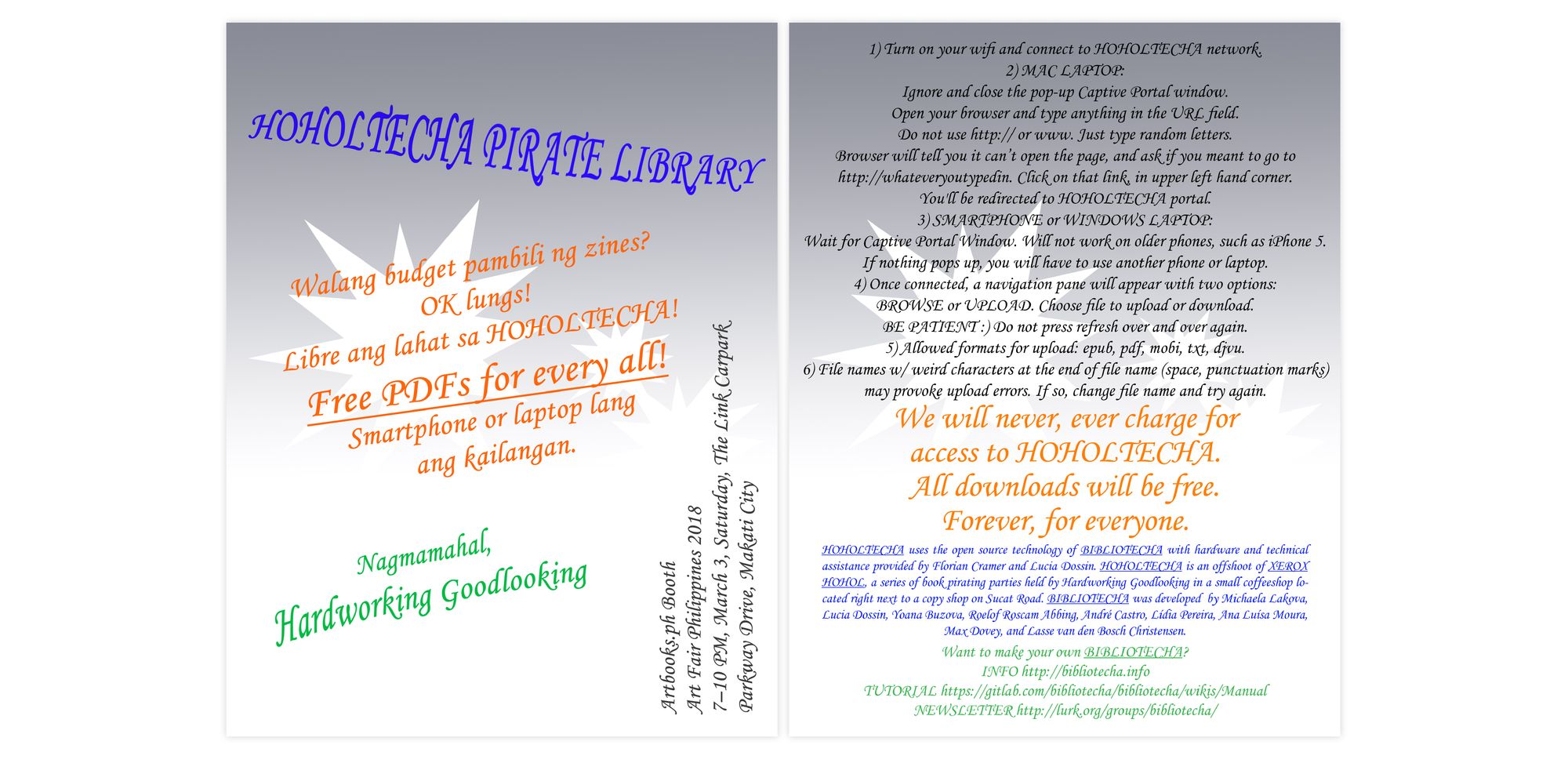
Do you think that without your formal education in design you view the discipline a different way? You are approaching it from a different angle, one based in the vernacular.
Just last summer, while sidewalking with Nathalie Hartjes (of Showroom Mama Gallery in Rotterdam), she defined the vernacular in terms of contemporaneity. What is truly of its time, often concocted through bucking propriety—for example, African-American vernacular English slang that thumbs its nose at canonical English. What is newest and thus not yet institutionalised/cannibalised. What has not yet been distilled and bottled into the formal. When a language formalises, this is when it can begin to alienate people.
“There is no wrong spelling for what is inherently slippery. It’s this idea of growing a language, growing it precisely from the fact that it is error-laden. Mistakes can be preserved and explored in a text […] as a way to see (or even participate in) the evolution of a language in real-time.”
I think it’s a labour of writing about the vernacular in the vernacular. Using its native style (incorporating regular wordery), respecting the original form and insisting upon the correctness of this form. There is no wrong spelling for what is inherently slippery. It’s this idea of growing a language, growing it precisely from the fact that it is error-laden. Mistakes can be preserved and explored in a text (or design surface) as a way to see (or even participate in) the evolution of a language in real-time. A Ulyssean task, but perhaps allowing those who speak the vernacular to define and participate in the narrative as themselves, rather than being James Joyce and just putting words into their fictional mouths, claiming authorship over a collective phenomenon.
However, caution is necessary. The vernacular is not saintly. The popular (populism) is shadowy territory that cannot be romanticised carelessly. How to study the lightness and the darkness of populist aesthetics?
What would you like the mainstream to learn from the vernacular?
The vernacular originates from the mainstream, in a way, so perhaps it’s not so much of a learning as it is a recognition of what is already known.
I would like, in the mainstream and outside of it, more collective exploration. How can we (not just designers) design together? How can you design with, instead of for all of the stakeholders in the process?
Also, a curvy approach to ethics around cultural exchange: ethics with room for negotiation as opposed to a shrill Global North/Western approach to appropriation, uncomfortably built around essentialism and racial purity. That being said, it should be an ethics (and not a morality) held up to some agreed-upon baseline of what is colonialist and extractive.
And, to circle back to a previous topic, expand ideas around copyright and authorship. There’s the copyright, the copyleft and the copyfarleft. What about the copyother, in between romanticisms around singular authorship and limitless freedom. On the left side of the argument, there is this idealisation of complete open access and open markets, which can quickly become very oppressive. Precisely because these markets of information are unregulated, when something works, is picked up/becomes popular and there is no legislation protecting those who are galvanising (or even consuming) that popular knowledge, then the obscenely large—corporations, governments, institutions, fact-averse mobs—can come in, wrest control, hold the information hostage. I would like to see what a copyother can be, something in between, something flexible, able to switch codes, able to respond to its context without losing its character of… I dunno. Honour?
Paul Elliman has described himself as trolling graphic design with his work of found letterforms, is this how you see your relationship to typography?
Yeah, definitely I am trolling, in the sense that it’s—haha—for the lulz. There is also a more thoughtful investigation of what makes us (or me) laugh as an indicator to what makes us (or me) uncomfortable. In Publishing as Bloodletting, for example, there are a lot of literal LOLs in there. The essay and play is not a comedy, though. It is fundamentally about what pains me the most in the realm of authorlessness. To believe in communal labour, but to also acknowledge the common can transgress boundaries of the self. In working to understand what is mine and what is Common, there have been many painful moments. Sharing can wound, deeply, because it has to be done with others, who aren’t always kind.
“Vernacular scholars learn by doing, through mimesis. They learn academia by simulating academia, with error—a synonym for discovery. There are these uncomfortable moments where you’re discovering in real-time, i.e, you’re making mistakes. Some people are impatient with the act of one actively learning.”
There is another anger that I express through humour. As a vernacular actor in academia, there is a certain revenge that I feel like I need to exact. I have often felt that my knowledge was belittled because it was not the standard body of it. Vernacular scholars learn by doing, through mimesis. They learn academia by simulating academia, with error—a synonym for discovery. There are these uncomfortable moments where you’re discovering in real-time, i.e, you’re making mistakes. Some people are impatient with the act of one actively learning. So indoctrinated in the canonical, deviance is dealt with harshly, as that is what and how they have learned, or what makes them think they have learned. Perhaps punishing those who deviate is a way to make sense of the suffering scholars have endured in order to be certified as learned? Anyway, I guess this is my way of exacting revenge. And I have no qualms about saying that this is revenge. It’s like, well fuck you, cause I got here anyway, without all your bureaucratic hoops and assessment checkpoints, and now I’m going to shit in your cathedral.
When I say shit in the cathedral, it’s not so much against the cathedral, which is an architectural feat to which we owe respect. The symbolic shit is more a critique against the religion of man that inhabits the structure and warps its value. Like, we can’t say that Hardworking Goodlooking is not modernist in its design because Kristian and Dante are educated in the modernist tradition and all of us (Czar included) have imbibed modernism in one way or another. There is something to be said about the feat and purpose of a structure, thinking of Jo Freeman and The Tyranny of Structurelessness. How to inhabit the structure differently? It’s not always about building a new cathedral, though sometimes it kind of is.
I don’t believe that none of the master’s tools will be useful in taking down the master’s house. None is an absolute, a perfection. As humans in flesh-prisons, we are not native to perfection. I think you have to learn how to dredge through those tools and separate what can be repurposed from what must be decommissioned. All this, without losing sight of the fact that these implements are built within an implicit kind of system that they may be reproducing on some level.
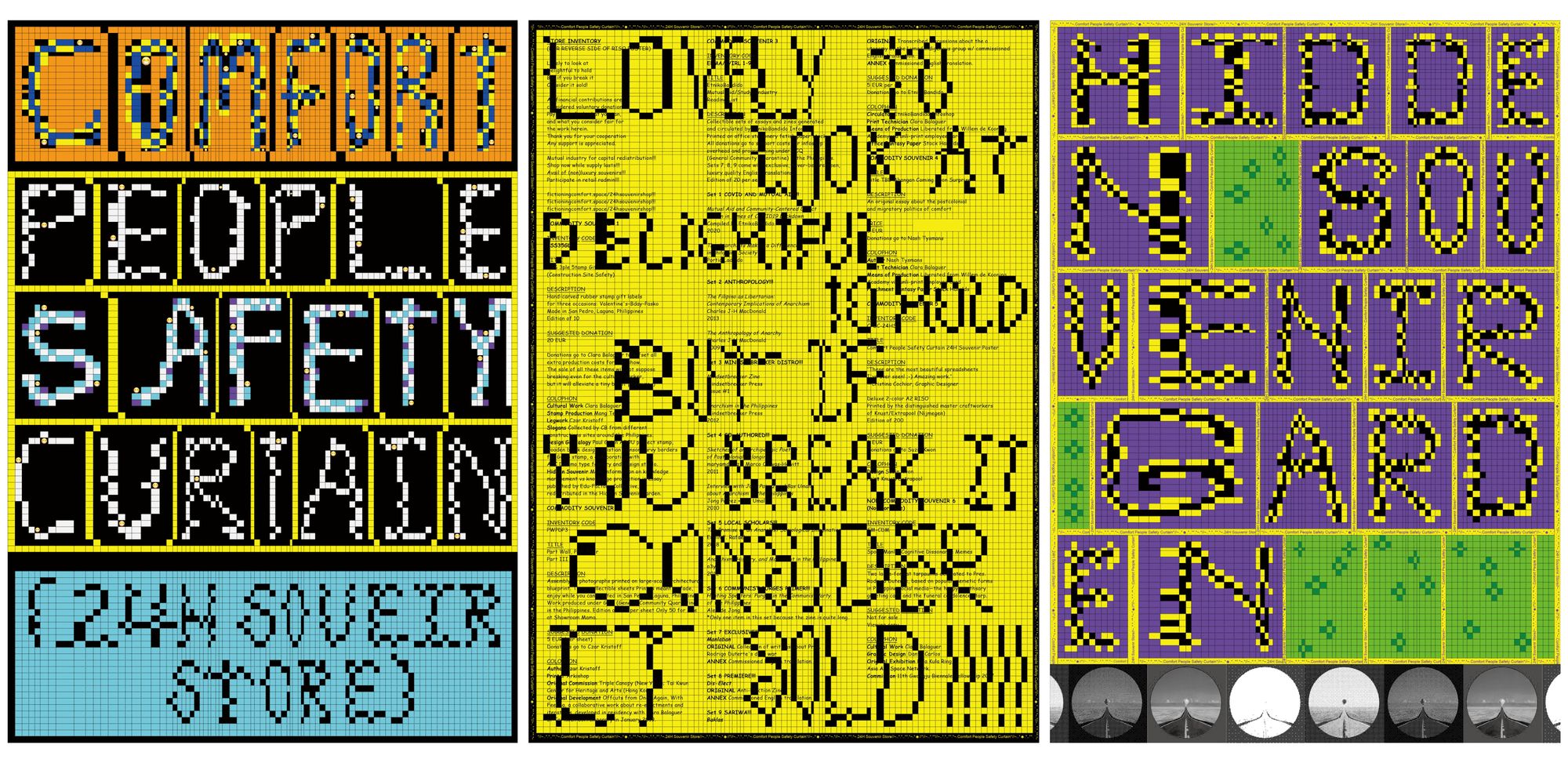
It’s about working with the tools available to you, and deciding at what point you need to get rid of those tools?
Working with some of the tools, I suppose, and discerning which tools can be used, in what context, for what purpose. At the moment there is a big push towards F/LOSS technology, as in free/libre open-source software. When you’re making work and trying to connect with people in the Philippines, if you don’t use YouTube, your audience will likely be smaller. If you don’t use Facebook, your audience may likely be more privileged. Facebook is free in the Philippines. You can access it without a data plan, which means that to a great many people, Facebook = internet. The point of access for people in places like the Philippines becomes more difficult when using alternative technology. Basically, you can only degoogle and defacebook if you are able to afford that luxury (or when you are forcibly removed from it, as by oppressive governments).
“An either/or approach is frustrating. I prefer to think of what’s possible in the in-between. I think people think that the in-between is in the middle, but the in-between is its own place.”
I know this extra effort is somehow the point of F/LOSS, a movement I believe in. I know there is a price to pay for autonomy. I know we have to build new habits. I also know that there are legitimate reasons why free big tech platforms/software are so widely used in areas with very slow internet and a much lower per-capita income. You have to negotiate both of these conditions simultaneously: the urgent necessity to look for alternatives outside of Big Software and the fact that, when surfing the poverty line, ain’t nobody got time for that.
An either/or approach is frustrating. I prefer to think of what’s possible in the in-between. I think people think that the in-between is in the middle, but the in-between is its own place. It is at the edge of two or more different ecosystems that the most fecund biodiversity is found. This is where nature evolves, and perhaps so could we.
Clara Balaguer is variously named a “tutor,” a “cultural worker,” or a “vernacular designer” at the Piet Zwart Institute, that houses the postgraduate program of the Willem de Kooning Academy based in Rotterdam. While in her own Instagram bio she describes herself as a “Steward” of “To Be Determined,” a “Publisher” of Hardworking Goodlooking , and a “Director” of The Office of Culture and Design (RIP).
Rhys Atkinson is a graphic designer interested in digital vernaculars and internet ‘shitposting.’
This interview was originally published in A Line Which Forms a Volume 4, a critical reader and symposium of graphic design-led research that is written, edited, designed and published annually by participants of the MA Graphic Media Design course at London College of Communication.
Title image: Billboards in Manila. Photo by Jeffrey Hannan.

















